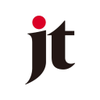Smoking in Japan
There has been a downward trend in current smoking prevalence in the general population in Japan. Including both sexes, smoking prevalence declined from 32% of in 2000 to 21% in 2015, declining further to 19.4% in 2022. There are 21.2 million current smokers in Japan as of 2022. Male smoking prevalence has significantly declined over the last two decades, from 51% in 2000 to 33% in 2015, further decreasing to 28.7% as of 2022. Women’s smoking prevalence has also declined (albeit from a lower initial prevalence than men), from 13% in 2000 to 10% in 2015, with a slight increase to 10.5% in 2022. he use of heated tobacco products (HTP) has blossomed since their introduction to the country in 2014, with 12.9 million current users in 2022. This equates to a prevalence of 11.8%. Global State of Tobacco Harm Reduction research, which compares sales volumes, shows the changing nature of cigarette and HTP consumption. Using market data released in annual and quarterly reports by Philip Morris International and Japan Tobacco, the sales of individual cigarettes was around 182.34 billion units when heated tobacco products started to become more widely available in 2015. By 2023 this had dropped 52% to just 88.1 billion units, a fall of 94.2 billion units, while the sale of the tobacco sticks used in HTP that year had risen to 62 billion units in under 10 years. Heated tobacco products are generally regulated in a similar way to combustible cigarettes in Japan. Both cigarettes and HTP are banned from hospitals, schools and government offices. Since 2020 in factories, general offices and restaurants, cigarette use has only been permitted in special tobacco rooms that are used exclusively by smokers for smoking and nothing else. HTP users, however, while also restricted to designated rooms within these venues, can also undertake other activities in these spaces, for example, eating and drinking. Nicotine vaping products are regulated as medicinal products. No nicotine vapes have yet been approved for sale in Japan, but they can be imported for personal use. Non-nicotine vapes are used in Japan and the vaping prevalence amongst adults was 1.9% as of 2017. 11.7% of the general population have tried vaping at least once. The situation is more complicated for oral nicotine products: snus is legal to use and to buy, and can be marketed, however, as with nicotine vapes, nicotine pouches are not available in Japan as none of these products has yet been approved for sale. Nicotine replacement therapies (including gums and patches) can be purchased without prescription and can be legally marketed, with a total market size of €77.7 million.
Read articles from Japan
May 29, 2024 by filtermag.org
Japan’s Leading Position in the Tobacco Harm Reduction World
Japan has achieved a 52% decrease in cigarette sales, largely due to the popularity of heated tobacco products (HTP). The success story is outlined in a Global State of Tobacco Harm Reduction (GSTHR) briefing. Factors contributing to this decline, including regulatory measures and health concerns, are discussed. Despite initial dual use, many are transitioning to HTP for reduced harm. The unique Japanese trend emphasizes switching from cigarettes to safer alternatives. Notable growth in HTP sales has outpaced cigarettes, supported by a welcoming retail environment and minimal government intervention. Japan's success highlights consumer-driven public health improvements and the cultural acceptance of harm reduction methods.
May 12, 2021 by moneycontrol.com
Philip Morris to phase out cigarettes in Japan within decade
The head of tobacco giant Philip Morris said the company will phase out conventional cigarettes in Japan within 10 years, in an interview with the Nikkei business daily published Friday.
The Marlboro maker announced in 2016 a long-term goal to stop selling cigarettes and replace them with alternatives that it says are less harmful -- but this is the first time it has given a clear deadline.
"We want Japan to be the first market" for the phase-out, newly appointed CEO Jacek Olczak told the Nikkei in an interview published in Japanese.
April 09, 2021 by manilatimes.net
Japan model in smoking rate reduction – expert
The introduction of noncombustible alternatives in Japan in 2014 helped reduce smoking rate in the world’s largest market of heated tobacco products (HTPs) by nearly a third in a span of three to four years, according to a public health expert.
Kumamaru Hiroya, vice director of the AOI Universal Hospital in Kawasaki, said nicotine replacement therapy (NTP), such as nicotine patches, has proved ineffective in reducing the smoking rate in Japan.
January 19, 2021 by japantimes.co.jp
Seizures of liquid marijuana surging in Japan
The amount of liquid marijuana seized in Japan has been surging, putting police and customs authorities on high alert.
The estimated amount of marijuana in liquid form confiscated by Tokyo Customs in 2020 jumped nearly 70 times from the previous year’s level. A customs official described the situation as “an explosive increase.”
The liquid extracted from marijuana plants has a higher content of hallucinogenic tetrahydrocannabinol, or THC, than dried cannabis and can be used in a similar way to electronic cigarettes.
December 03, 2020 by prnewswire.com
Sales of Conventional Cigarettes in Japan Reduce by 34% Since Launch of Heated Tobacco Products
Frost & Sullivan's latest thought leadership white paper, Tobacco Harm Reduction and Novel Nicotine and Tobacco Products: Evidence from the Japanese Market, written in collaboration with Philip Morris International, covers the impact of the commercial launch of NNTPs on tobacco use in Japan and discusses the regulatory approach that the Japanese government is taking with regard to these products. It focuses on the Japanese market because HTPs have been commercially available in the country since 2013, and Japan is the largest market for HTPs, despite the absence of a formal THR policy to encourage this.
August 10, 2020 by japantimes.co.jp
Japan's male smoking rate drops below 30% for first time
Japan’s male smoking rate fell below 30 percent for the first time last year, slipping to 28.8 percent, down 2.3 points from the previous study in 2016, a health ministry survey found.
The national livelihood survey, conducted every three years by the Health, Labor and Welfare Ministry, also found that the female smoking rate fell 0.7 point to 8.8 percent.
March 30, 2020 by stripes.com
Japan’s ban on smoking inside restaurants and bars takes effect this week
People will no longer be allowed to smoke in most restaurants and bars in Japan starting Wednesday, according to the Ministry of Health, Labour and Welfare.
The ban, which includes heated tobacco like cigarettes and cigars but not e-cigarettes, protects people “who want to avoid getting exposed to secondhand tobacco smoke,” according to a health ministry document explaining the law.
It’s part of a revised Health Promotion Law passed in 2018. [...]
January 18, 2019 by reuters.com
Japan Tobacco ratchets up smokeless war with new products
Japan Tobacco Inc (2914.T) on Thursday unveiled two “heat-not-burn” products, as it races against market leader Philip Morris International Inc (PM.N) for a larger share of the vaping space with conventional cigarettes steadily falling out of favor. Despite commanding 60 percent of the local cigarette market, Japan Tobacco has been caught on the wrong side of the rising popularity of heat-not-burn (HNB) alternatives and has lagged in the category in its own backyard versus the Marlboro maker.
August 06, 2018 by reuters.com
Japan Tobacco buying Bangladesh Akij's tobacco business for $1.5 billion
Japan Tobacco Inc is buying the tobacco business of Bangladesh’s Akij Group for around $1.5 billion, its second major purchase in five months as the world’s third-biggest cigarette maker seeks new growth markets to offset shrinking sales at home. “With this investment, we continue to accelerate our expansion in emerging markets that matter, a key component of Japan Tobacco Group’s growth strategy,” Japan Tobacco said in a statement on Monday.
July 18, 2018 by forbes.com
Can Philip Morris Provide Some Positive iQOS News In The Second Quarter?
Philip Morris International (NYSE:PM) is set to release its second quarter earnings on July 19, wherein revenue and EPS growth of 9.4% and 8.8% are expected, as compared to the corresponding quarter of the previous year. Revenue growth is set to be driven by increased sales of its reduced risk products (RRPs), iQOS in particular, as well as price increases, while a reduction in the tax rate is expected to be the primary driver in the earnings improvement.
- Page 1 of 2







